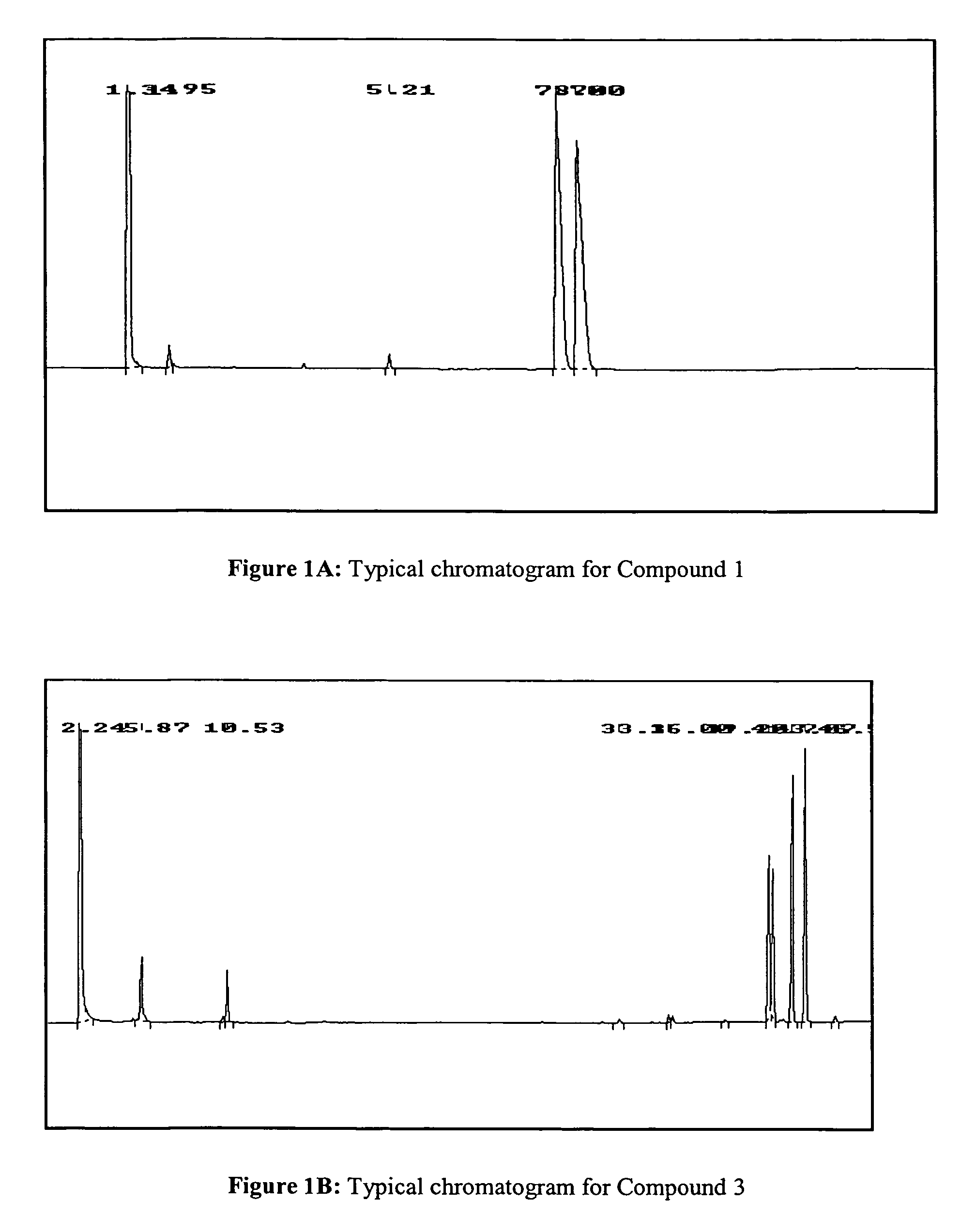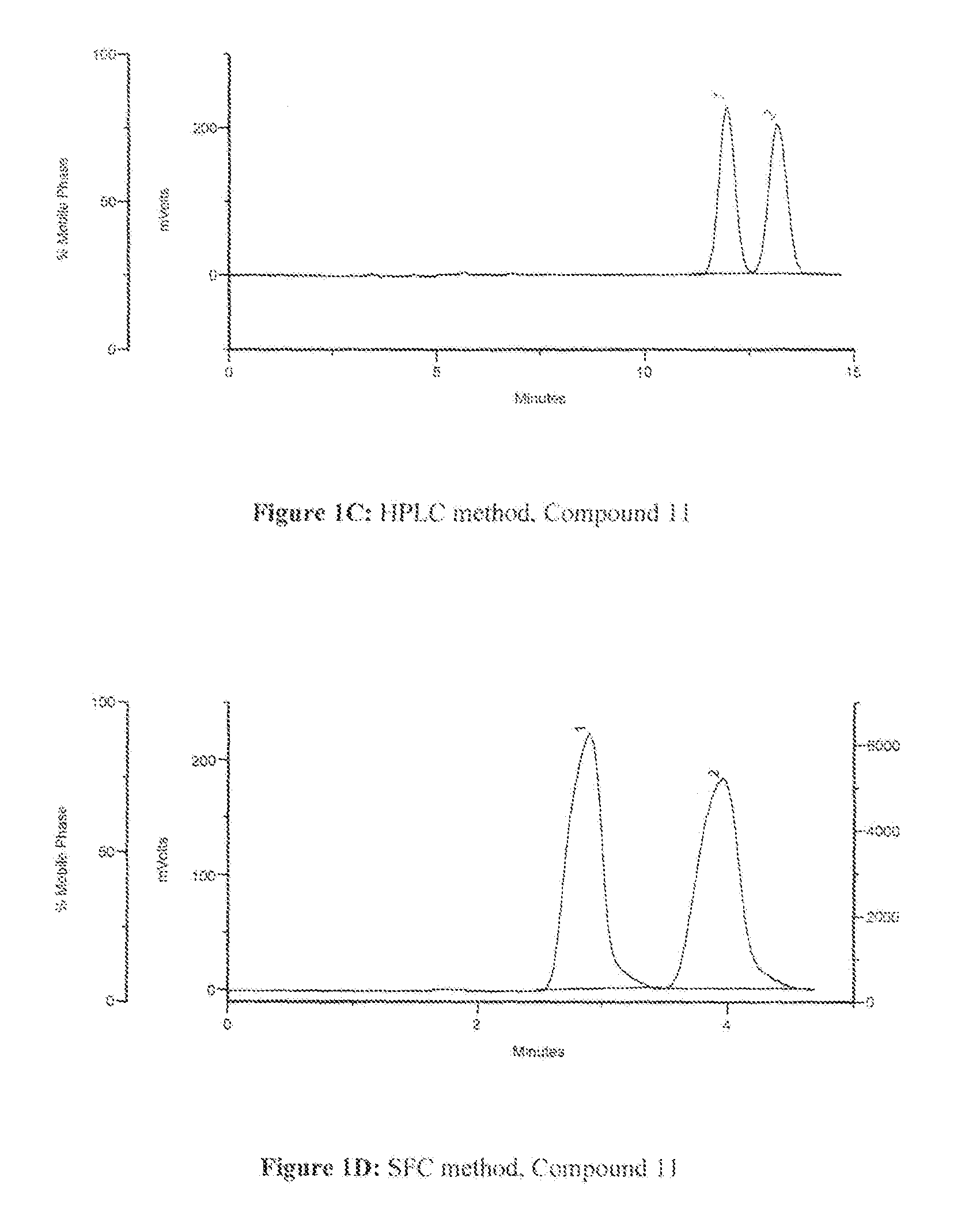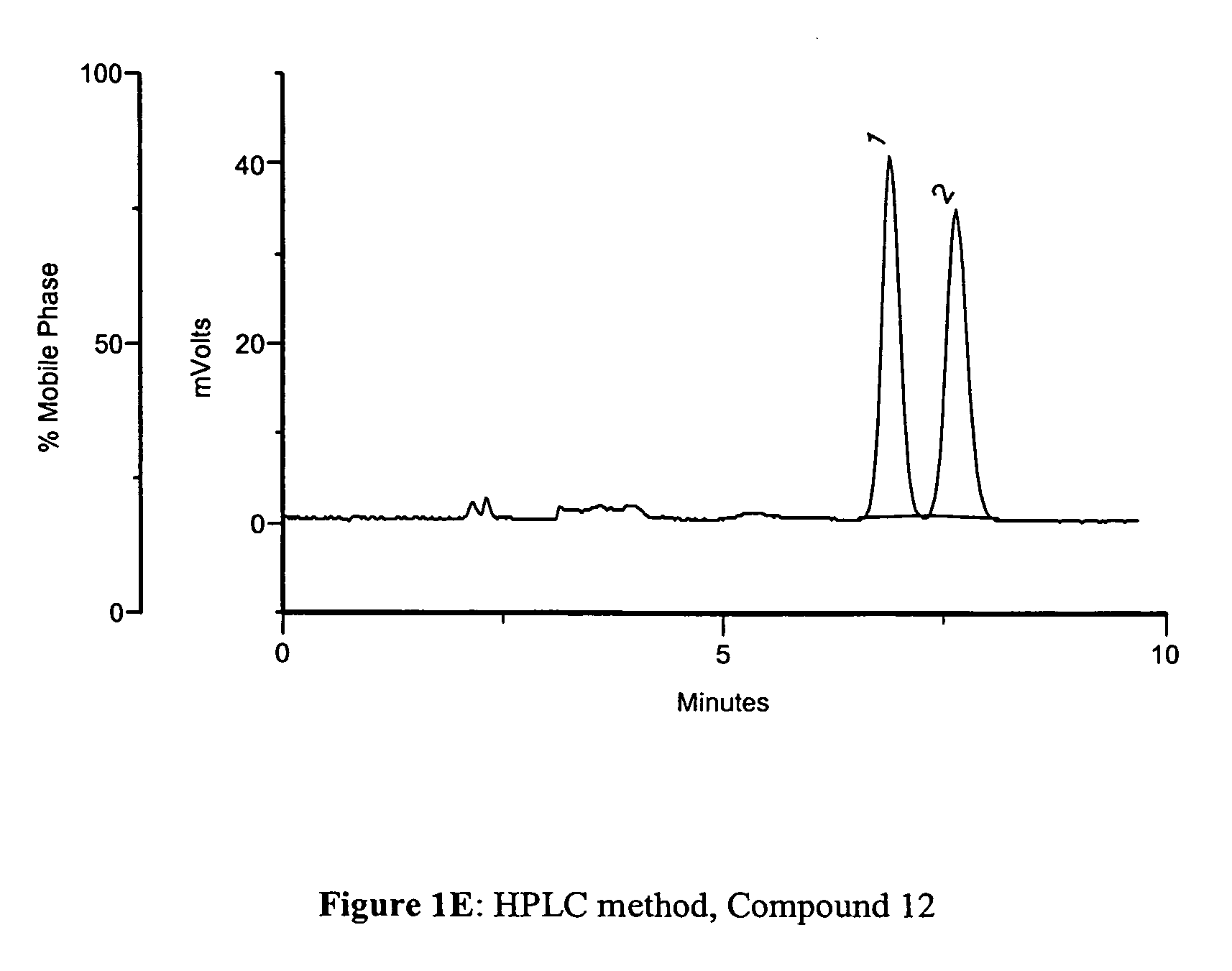Methods to manufacture 1,3-dioxolane nucleosides
a technology of dioxolane and dioxolane, which is applied in the field of methods to manufacture 1, 3dioxolane nucleosides, can solve the problems of difficult oxidative step, difficult process, and unstable aldehyde synthesis
- Summary
- Abstract
- Description
- Claims
- Application Information
AI Technical Summary
Benefits of technology
Problems solved by technology
Method used
Image
Examples
example 1
Isobutyric acid 2,2-dimethoxy-ethyl ester (2a)
4-Methoxy-benzoic acid 2,2-diethoxy-ethyl ester (2b)
[0187]To a well-stirred solution of 2,2-diethoxy or 2,2-dimethoxy-ethanol (1, 100 mmol), DMAP (61 mg, 0.5 mmol) and Et3N (16 ml, 11.64 g, 115 mmol) in EtOAc or tert-butylmethyl ether (50 ml) at 0° C. was slowly added the corresponding acid chloride (105 mmol). After stirring for 16 h at room temperature the reaction mixture was diluted with EtOAc (50 ml), and successively washed with: (c) NaHCO3 (2×100 ml), brine (2×100 ml), dried, filtered and evaporated to afford:
[0188]Isobutyric acid 2,2-dimethoxy-ethyl ester (2a, 99%) as a yellow liquid that was used in the next step without any further purification. GC (Rt=5.24 min., 98%); 1H-NMR (CDCl3) δ: 4.57 (1H, t, J=5.2, (MeO)2CHCH2—), 4.11 (2H, d, J=5.2, (MeO)2CHCH2—), 3.40 (6H, s, CH3O—), 2.60 (1H, m, OCOCH(CH3)2), 1.54 (6H, d, J=6.8, OCOCH(CH3)2).
[0189]4-Methoxybenzoic acid 2,2-diethoxy-ethyl ester (2b, 100%) as a syrup that was used in th...
example 2
Isobutyric acid 4-oxo-[1,3]-dioxolan-2-yl methyl ester (3a)
[0190]To a well stirred solution of the corresponding acetal (2a, 30 mmol) and α-hydroxy acetic acid (3.42 g, 45 mmol) in acetontrile (30 ml) at 0° C. was slowly added BF3EtO2 (6.38 g, 5.70 ml, 45 mmol). The solution was left at room temperature overnight with stirring. The solution was partitioned between EtOAc (150 ml) and (c) NaHCO3 (150 ml). The organic solution was successively washed with (c) NaHCO3 (150 ml), brine (2×150 ml), dried, filtered and evaporated to afford:
[0191]Isobutyric acid 4-oxo-[1,3]-dioxolan-2-yl methyl ester (3a, 80%) as a colorless syrup. GC (Rt=7.89 min., 95%); 1H-NMR (CDCl3) δ:5.83 (1H, s, H-2), 4.35-4.20 (4H, m, H-5, H-5′ and —CH2OCO—), 2.62 (1H, m, (CH3)2CHCOO—), 1.19 (6H, d, J=7.0, (CH3)2CHCOO—).
[0192]Calculated mass for C8H13O5 (M+1)+: 189.0763. Found: (H.R.F.A.B.M.S.): 189.0763.
example 3
4-Methoxybenzoic acid 4-oxo-[1,3]-dioxolan-2-yl methyl ester (3b)
[0193]A solution of 4-methoxybenzoic acid 2,2-diethoxy-ethyl ester (2b, 7.5 g, 28 mmol) in Cl2CH2 (75 ml) was treated with TFA (16.7 g, 11.3 ml, 140 mmol) and water (7.5 g, 7.5 ml, 28 mmol). The homogeneous solution was stirred for 3.5 hours at room temperature until GC showed complete reaction. The solution was concentrated in vacuo at 40° C. and then diluted with hexane and concentrated in vacuo several times to remove traces of TFA. The product, 4-methoxybenzoic acid 2-oxo-ethyl ester (2c, 5.9 g, 28 mmol, 100%) was isolated as an amorphous white solid and was used in the next step without any further purification. GC (Rt=11.0 min, 95%); 1H-NMR (CDCl3) δ: 9.72 (1H, s, HCO—), 8.06 (2H, d, J=8.8, ArH), 6.95 (2H, d, J=8.8, ArH), 4.87 (2H, s, HCOCH2O—), 3.87 (3H, s, OCH3).
[0194]To a well stirred solution of the crude aldehyde (2c, 5.9 g, 28 mmol) and α-hydroxy acetic acid (5.2 g, 68 mmol) in DME (100 ml) at 0° C. was slo...
PUM
| Property | Measurement | Unit |
|---|---|---|
| temperature | aaaaa | aaaaa |
| temperature | aaaaa | aaaaa |
| temperature | aaaaa | aaaaa |
Abstract
Description
Claims
Application Information
 Login to View More
Login to View More - R&D
- Intellectual Property
- Life Sciences
- Materials
- Tech Scout
- Unparalleled Data Quality
- Higher Quality Content
- 60% Fewer Hallucinations
Browse by: Latest US Patents, China's latest patents, Technical Efficacy Thesaurus, Application Domain, Technology Topic, Popular Technical Reports.
© 2025 PatSnap. All rights reserved.Legal|Privacy policy|Modern Slavery Act Transparency Statement|Sitemap|About US| Contact US: help@patsnap.com



